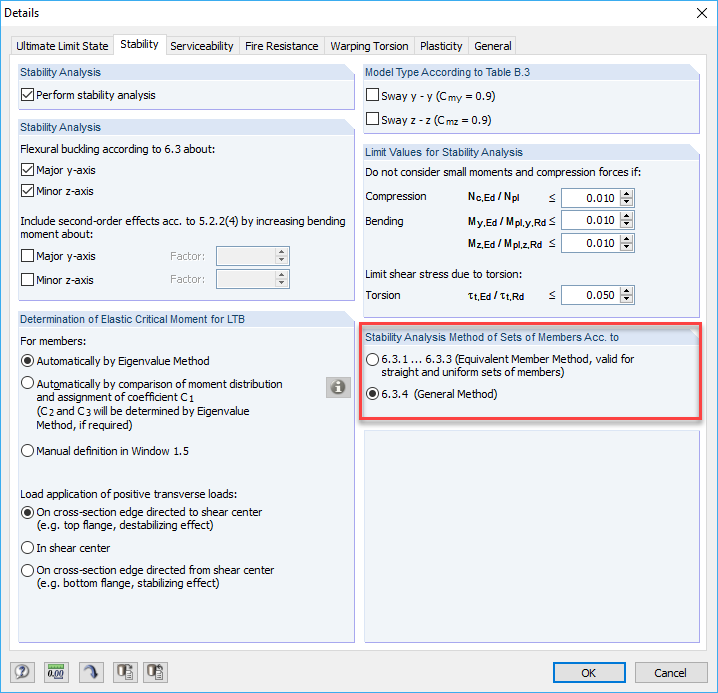If the internal forces were calculated according to the second-order analysis, it is not necessary to perform flexural buckling analysis according to the equivalent member method for the major axis.
However: You have to consider precambers and initial sways of the members in load combinations when determining internal forces.
EN 1993‑1‑1 requires generally considering the influences due to structural deformations, geometric imperfections, slippage in the connections, and, if necessary, the effective width from local plate-buckling. Therefore, create imperfection load cases that you then can insert in the load combinations without partial safety factors and combination coefficients.
In practice, the internal forces are predominantly calculated in-plane with imperfections. Out-of-plane buckling and lateral-torsional buckling are often calculated using the equivalent member method, but with the already existing internal forces according to the second-order analysis.
In EN 1993‑1‑1, the general method for the stability analysis was introduced. First, the ideal critical load of the system is determined out-of-plane under consideration of imperfections. From this, you can determine the system slenderness and the reduction factor. First, the internal forces should be calculated using the second-order analysis to check buckling and lateral-torsional buckling according to the general method. Thus, an in-plane calculation is not absolutely necessary.
Please note that the frame posts and the beam can both fail due to flexural and lateral-torsional buckling. EN 1993‑1‑1 only uses one stability check, which contains all forms of buckling.
The stability analyses as well as the cross-section design checks can be performed using the RF‑/STEEL EC3 add‑on module. You have the choice between the Equivalent Member Method and the General Method.
For a precise check according to the second-order torsional-flexural analysis under consideration of warping, we recommend using the RF‑/STEEL Warping Torsion extension or the RF‑/FE‑LTB add-on module.
